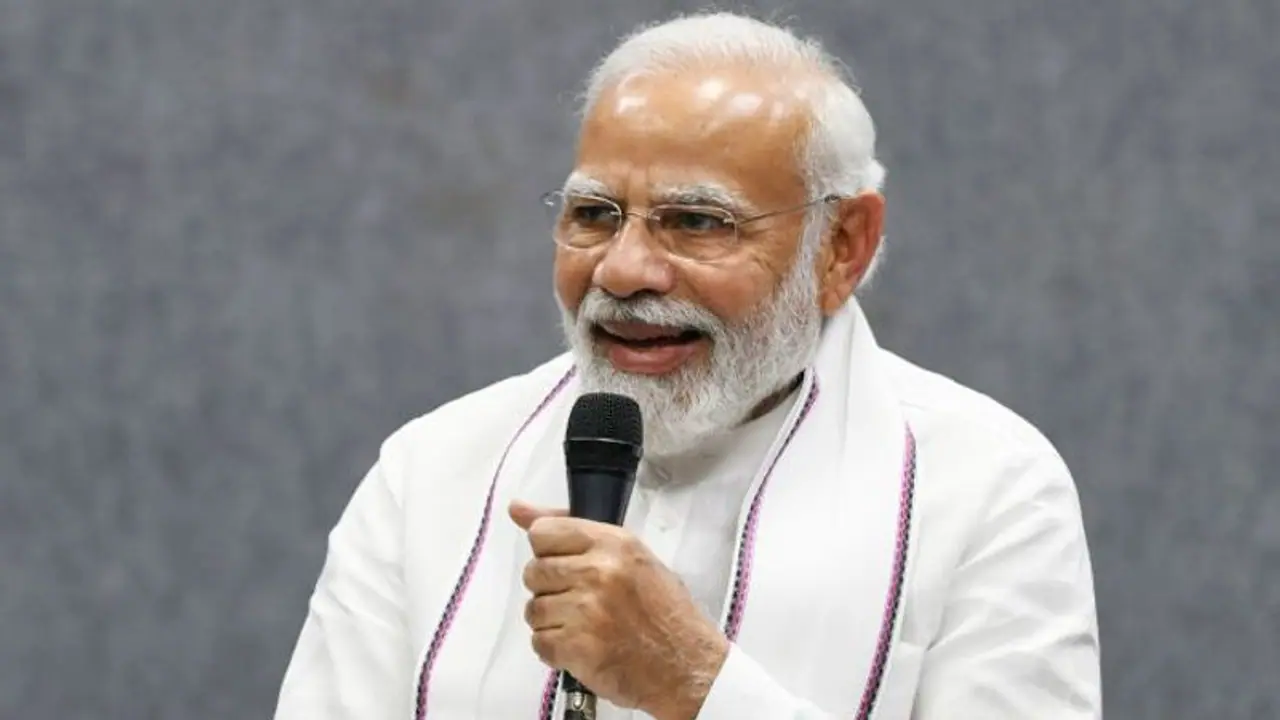The prime minister personally monitors the projects of infrastructure or social welfare schemes, aimed at reaching the last man in the queue.
With the abrogation of Article 370 and 35A that used to give a special status to Jammu & Kashmir completing about three years, Prime Minister Narendra Modi will be carrying out his maiden visit to the Union Territory on April 24 amidst tight security arrangements.

Security apparatus has been enhanced after a failed fidayeen attack near Sunjwan army installation in Jammu on April 22. In the encounter, the security forces neutralised two terrorists while a CISF personnel also lost his life.
Ever since the NDA government under Prime Minister Narendra Modi came into power in 2014, Jammu & Kashmir and northeastern states have assumed significance in the system. The prime minister personally monitors the projects of infrastructure or social welfare schemes, aimed at to reach at last man in the queue.
Why is the Prime Minister visiting Jammu & Kashmir?
He will inaugurate and lay the foundation stone of development projects worth over Rs 20,000 crore in the Union Territory. As per an official statement, Modi will also inaugurate the Banihal Qazigund Road Tunnel, built at a cost of over Rs 3100 crore.
The 8.45-km-long tunnel would reduce the road distance between Banihal and Qazigund by 16 km, and also reduce the travel time by about 1.5 hours.
The twin tunnel would help in creating all-weather connectivity between Jammu and Kashmir.
Besides, he will also lay the foundation stone of three road projects of the Delhi-Amritsar-Katra Expressway, worth over Rs 7500 crore.
The prime minister is also scheduled to lay the foundation stone of the Ratle and Kwar Hydroelectric projects to be constructed on the Chenab river in the Kishtwar district at a cost of about Rs 5300 crore. It would be an 850 MW Ratle Hydroelectric Project.
Another Kwar Hydroelectric Project of 540 MW will also be built in the Kishtwar district at a cost of over Rs 4500 crore.
Both the projects will help meet the power requirements of the region and would make the territory power surplus.
The prime minister will also dedicate 100 Jan Aushadi Kendras in J&K to the nation.
On the occasion, he will further hand over SVAMITVA cards to beneficiaries under the scheme.
He will also transfer award money to Panchayats who are winners of awards given across different categories on National Panchayati Raj Day for their achievements. Prime Minister will also visit the INTACH photo gallery which depicts the rural heritage of the region, and Nokia Smartpur, a rural entrepreneurship-based model designed to create ideal smart villages in India,” PMO added.
Why is the Prime Minister visiting Jammu & Kashmir now?
India celebrates National Panchayati Raj Day on April 24 every year since 1992-93.
On the occasion, he will address a gathering of over 30,000 Panchayati Raj Institution (PRI) members of Jammu and Kashmir and 700 Panchayats across the country in a virtual mode from the Palli panchayat of Samba district of Jammu & Kashmir.
This year, Palli has been chosen for the Panchayati Raj Diwas function this year. The latest agricultural innovations would be showcased during the event.
What is the message that the Prime Minister is sending across?
As per the experts, he is visiting the union territory days after the new government under Shehbaz Sharif came into power in Pakistan. Though, his visit was pre-planned.
Samba is the border district with Pakistan and in recent years many panchayat workers were killed by the Islamabad-sponsored terrorists.
With the presence of the prime minister in the district, it would send a strong signal to terrorist organisations and their sympathisers.
According to experts, it would also be like a morale booster for the panchayat members. The government is also attempting to display that the centre is with them whatever may the situation be.
How peaceful has Kashmir been since Article 370 abolition?
The ruling party has been claiming that the real normalcy in Jammu & Kashmir came after the abrogation of Article 370 while the Kashmir-based political parties have been claiming that the situation has deteriorated.
As far as security forces are concerned they are of the view that the situation has improved post-2019. As per the data, a total of 175 terrorists were killed from 2021 to March 22, as against 183 in 2020.
The forces have claimed that not just local insurgents but foreign terrorists have also been apprehended. The number of stone-pelting incidents has decreased.
